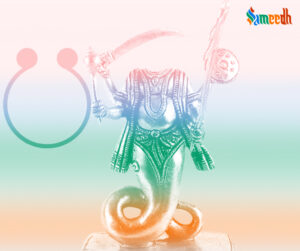Ketu, also known as the South Node of the Moon, is one of the Navagrahas (nine celestial bodies) in Hindu astrology. Along with its counterpart Rahu (the North Node of the Moon), Ketu is considered a shadow planet. Ketu helps a person detach from things. Ketu is responsible for showing futileness of materialism. It displays the qualities of detachment, solitude, and derangement. This can be optimised for spiritual growth but can also push an individual into loneliness.

Both Rahu and Ketu are not actual physical planets made up of mass, they are the points of intersection between the orbit of the Sun and Moon, making them lunar nodes. As they cause an eclipse, they are also known as shadow plants but are strong energy points. Ketu takes a person on the spiritual path. Ketu acts exactly opposite way than Rahu. Rahu makes a person strive for material gains and then Ketu shows the hollowness in all such fame and material gains so that a person can move forward towards the spiritual path.
Here are key points about Ketu in Hindu astrology and mythology:
- Representation: Ketu is depicted as a headless celestial serpent or dragon. It is often portrayed with a lower half that resembles a fish or tail. The severed head symbolizes detachment from worldly desires and materialism.
- Shadow Planet: In astrology, Ketu is known as the South Node of the Moon, representing the point where the Moon’s orbit intersects the ecliptic plane. It is considered a malefic planet with influences on an individual’s spiritual growth and karmic patterns.
- Ketu in the Birth Chart: The placement of Ketu in an individual’s birth chart is believed to indicate their past-life karma, spiritual inclinations, and areas of life where detachment and introspection are needed.
- Moksha Karaka: Ketu is often associated with spiritual enlightenment and liberation (moksha). Its influence is considered to guide individuals toward a deeper understanding of the self and a detachment from worldly attachments.
- Ketu Mahadasha: In Vedic astrology, periods known as Mahadasha represent the major planetary influences in an individual’s life. The Ketu Mahadasha is believed to bring spiritual insights and experiences. However, it may also be associated with challenges and a need for introspection. The Mahadasha of Ketu lasts for a total of 7 years.
- Worship of Ketu: Devotees may worship Ketu to seek blessings for spiritual growth, release from karmic burdens, and protection from negative influences. Some people observe fasts and perform rituals on Tuesdays, which is associated with Ketu.
- Gemstone (Cats Eye): The gemstone associated with Ketu is the Cat’s Eye (lehsunia or vaidurya). Wearing this gemstone is believed to help balance the energies of Ketu and enhance spiritual awareness.
- Ketu and Rahu Axis: Ketu and Rahu together form an axis in astrology. Their transits and positions in the birth chart are studied to understand the karmic influences in an individual’s life.
- Detoxification and Healing: Ketu is associated with detoxification, both physically and spiritually. Its influence is sometimes linked to practices such as fasting, meditation, and other forms of purification.
It’s important to note that the interpretation of Ketu’s influence can vary based on the astrological system and the specific chart analysis. Astrologers consider the overall context of the birth chart and the planetary relationships for a comprehensive understanding.